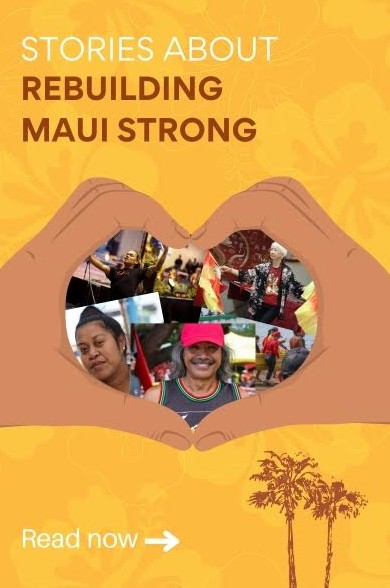by Akemi Tamanaha, Associate Editor
What do tourists think of when they think of Parisian food? Most people might think about crepes or baguettes, but it’s likely that very few would think about pho.
Walk through the streets of Paris, however, and you’ll begin to notice a lot of Vietnamese restaurants. If you do your research later, you’ll discover that Paris has a vibrant, historic Vietnamese community. Many of its members reside in Paris’ 13th district. Parisians call it the 13th arrondissement. Vietnamese call it Quan 13.
That vibrant Vietnamese community is the subject of a new documentary called Quan 13, produced by Vietnamese American journalist Hieu Gray. Quan 13 explores the Vietnamese diaspora in Paris. It lets the audience discover the Parisian Vietnamese community the way most newcomers to Paris do: through food.
In the documentary, Gray visits Vietnamese restaurants all over Paris and tells the story of Vietnamese French across different generations. While she details the history of the Vietnamese diaspora in Paris, Gray also explores what being “Viet Kieu” (Vietnamese living outside Vietnam) means to the people she interviews.
The documentary is being screened on November 1st in Little Saigon in Orange Country, California. Gray spoke with AsAmNews about the moments in her career that led to the making of Quan 13.

A Trip to Paris
The inspiration for the documentary came from Gray’s first trip to Paris. She was required to travel to Paris for a week during the winter and summer semesters of her creative writing MFA program at NYU from 2013 to 2015.
Her first trip came during the winter. It was cold out, and Gray wandered the streets of Paris in search of a warm bowl of pho. Her search brought her to a restaurant in Quan 13. There Gray was relieved to be able to speak a language that she knew while eating a nice warm bowl of pho.
“My Vietnamese isn’t the greatest, but I was able to understand what people were saying in the pho restaurant and it felt like I had found my lost tribe,” Gray said in an email interview with AsAmNews.
Her trip to Paris helped her gain a sense of community and understand the broader impact of the Vietnamese diaspora.

“And indeed, stumbling into the Vietnamese community in Paris felt like I had found long-lost relatives suddenly connected to one another by a shared culture,” Gray said. “Ironically, I never felt this same camaraderie in the States. I had to leave in order to see the greater impact of the diaspora.”
Gray knew that one day she wanted to tell the story of the Vietnamese diaspora in Paris. She would figure out how to tell that story as she began her career as a journalist.
Hieu Gray, “Accidental Journalist”
Gray’s career as a journalist helped lay the groundwork for Quan 13. Journalism, however, wasn’t always a part of the plan.
“I would call myself an “accidental” journalist,” Gray said. “I was never one of those kids who was editor-in-chief of their high school or college newspapers growing up.”
Although she never worked on the newspaper, Gray did begin to develop a love of writing in high school. In between classes, she would read books and wrote poetry. Gray went on to double major in journalism and poetry at Emory University in Atlanta, Georgia from 1999 to 2003.
“I knew I wasn’t going to make any money as a poet, so I focused my energy on journalism,” Gray said.

She began her post-graduate journalism career at CNN as a feeds/media coordinator. Eventually, she became one of the youngest senior writer/producers in her department at CNN.
According to Gray, one of the proudest moments of her career was leading a company-wide campaign that highlighted CNN employees who were refugees. The campaign was particularly important to Gray, a refugee herself.
The department Gray worked for was responsible for producing the launch campaigns of several successful network shows like Larry King Live and Anthony Bourdain: Parts Unknown.
As a producer for Parts Unknown, Gray worked on creating a successful launch campaign for the show and developing strategies to bring in new audiences across non-traditional platforms. She didn’t spend much time in the field with the late Bourdain but remembers the times she did fondly. According to Gray, Bourdain was both a hardworking professional and a dedicated family man.
“One of my fondest memories of working with Bourdain was on a shoot at his favorite dive bar in Hell’s Kitchen,” Gray said. “It was a tiki-themed bar that had seen better days. He was the utmost professional and had to be done by four to be home in time to make dinner for his daughter.”
Though her time out in the field with Bourdain was limited, Gray hoped to one day emulate the show’s ability to weave together stories about food and people.
“I remember looking at the footage coming in for each show and wishing I was the one out there telling stories and now I finally have that opportunity,” Gray said. “The production value was so high on that show that I wanted to recreate that same quality…but on a shoestring budget.”
With a love of the Vietnamese French and respect for Bourdain’s work in her heat, Gray was poised to begin making Quan 13.

The Making of Quan 13
The documentary came together quickly in 2018. Gray said it took only a little over a year to film. She soon found interview subjects through online research and word of mouth.
Gray admitted that the entire process was challenging.
“The biggest challenge was thinking that I could do it all myself,” Gray said. “Initially, I thought I could edit the documentary myself and just license library music, but I discovered it takes a team of talented creatives to bring this project to life.”
Gray worked with several talented Asian Americans to produce her documentary. She enlisted the help of cinematographer David Woo, who she had previously worked with in Japan. She recruited filmmaker Richard Van to help edit the film in post-production. She also reached out to Los Angeles based Vietnamese musician Bao Vo to help with the documentary’s score.

“Throughout the process, I made sure to work with other Asian American creatives,” Gray said. “I felt it was important to have just as diverse a crew behind the scenes, as in front of the camera.”
The impact the film has on Asian Americans is important to Gray. She said she hopes that the film resonates with Vietnamese around the world.
“This film has always been first and foremost for the Vietnamese living around the world,” Gray said. “This film is for them. I want to show them that we exist, and our stories are important.”
The film will be screened at Nguoi Viet, which is home to the largest Vietnamese American newspaper. The screening will begin at 7 p.m. and doors will open at 6:30. Free registration for the screening will remain open until 6 p.m., or until there are no spaces available.
AsAmNews has Asian America in its heart. We’re an all-volunteer effort of dedicated staff and interns. Check out our new Instagram account. Go to our Twitter feed and Facebook page for more content. Please consider interning, joining our staff or submitting a story.




